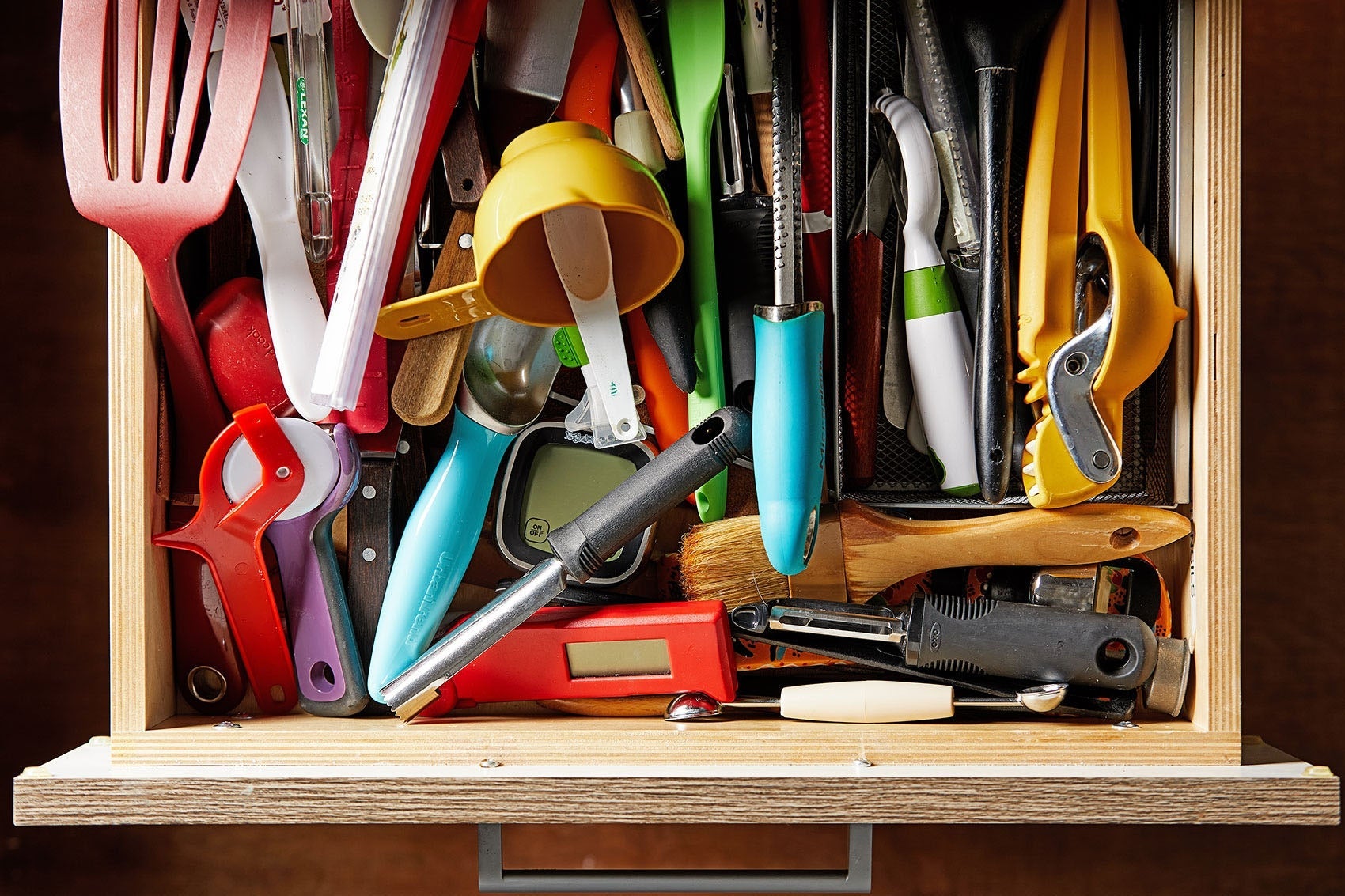Five ways to improve your kitchen in the new year
These tips and tricks will keep your cooking space tidy and help you reduce your impact on the environment

It’s 12 January – aka quitters day! Have you already ditched your totally unrealistic, pie-in-the-sky new year’s resolutions?
Sure, the pressure to make dramatic changes in your life can be a bit daunting, especially if it has to do with food. But let’s take a step back and dial down the stress. Let’s focus on incremental, attainable goals that will help you – and even the planet – in subtle but substantial ways.
Feeling a little less anxious? Good. Now here’s where to start.
1. Organise
There are a few universal chaos locations in the kitchen. You know, under the sink where you stash all the plastic bags you promise to recycle soon, the cabinet with all the mismatched storage containers and that “miscellaneous drawer” full of tons of tools you use – and tons you don’t. Tackle one spot at a time when you have 10 or 15 minutes and feel the burden lift. Thin out the gadgets you never or rarely reach for (how many digital thermometers do you really need?), and you’ll be much more likely to find and use the ones you do. The same goes for the spice cabinet.
2. Learn to take better care of your tools
Your kitchen is full of equipment and tools that can last forever as long as you treat them right. So, learn which items are best washed by hand – knives, pots and skillets are at the top of the list – and how to do that best. Keep your knives sharp (and safe). Keep your cast-iron seasoned, and don’t let it sit around wet to develop rust. Don’t use your non-stick cookware on high heat. Don’t heat an empty enamelled cast-iron Dutch oven on the stove top. When in doubt, read the manual.
Kitchen design through the ages
Show all 223. Use less plastic and disposables
Granted, this may be the hardest one on this list. If you’re a plastic wrap and aluminium foil addict, try to eliminate, or at least reduce, your habit. You can find reusable options for almost any kitchen staple these days, whether it’s beeswax wraps, silicone bags, cotton or mesh produce pouches, metal straws and food covers. Shopping the bulk bins to fill your own containers with exactly what you need cuts back on both packaging and food waste.
4. Store your fruit and vegetables better so they get eaten and not thrown away
Produce is essentially a living, breathing thing. If you think you can just chuck it in your fridge and assume it will be OK, you’ll be disappointed. Learn which foods benefit from humidity (generally, fruit needs less and vegetables more) and which should not be stored together (separate ethylene-producing items from ethylene-sensitive items). Some – potatoes, onions – shouldn’t be stored in the refrigerator at all. With just a few small adjustments, you’ll save money and food.
5. Keep your kitchen cleaner
This is always an admirable goal. Whether you’re a clean-as-you-go or clean-at-the-end cook, you never want to walk away from the kitchen without having tidied up. Procrastination here does not pay off, especially if there are dishes to wash and messes to wipe up. Of course, the kitchen is full of annoying little cracks and crevices, and stubborn stains. Inexpensive tools like wooden skewers, a Magic Eraser scrubber, and toothbrushes are among the cheap tools that can help you get the job done.
© Washington Post
Subscribe to Independent Premium to bookmark this article
Want to bookmark your favourite articles and stories to read or reference later? Start your Independent Premium subscription today.

Join our commenting forum
Join thought-provoking conversations, follow other Independent readers and see their replies